
If you’ve grown tomatoes for a long time, chances are you’re no stranger to split or cracked tomatoes. But, if you’re a newbie, cracks or splits can be scary.
They look intimidating and, even worse, unappetizing.
There is just one reason why tomatoes split, and it’s not a disease or pest.
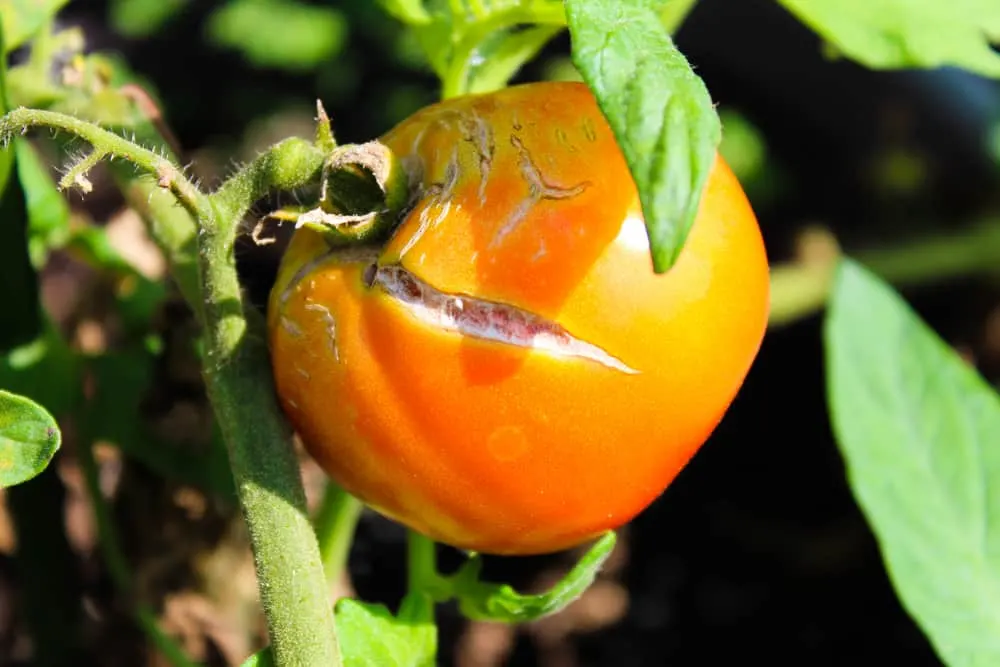
As daunting and common as split tomatoes may be, there are many easy steps to take to prevent it from happening again. And, keep in mind that not all split tomatoes are a lost cause when picked at the right time.
Why Are My Tomatoes Splitting?
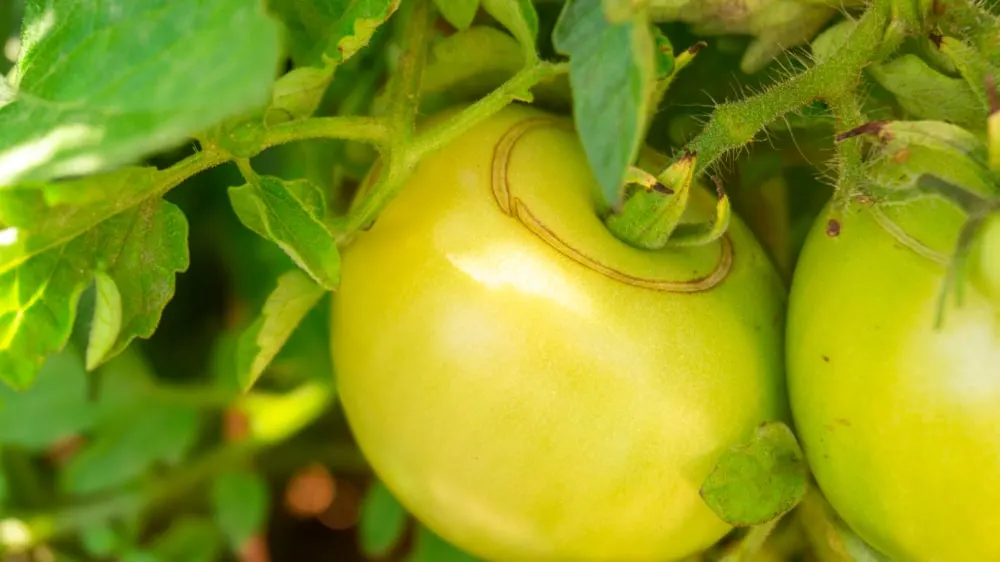
Tomatoes split and crack for one very simple reason – water fluctuations.
If you notice crevices cutting through your tomatoes, they’re not getting the consistent watering they so love.
Splitting commonly pops up after heavy rains following a hot and dry spell. The heavy rain causes the tomato’s yummy insides to grow faster than the outer skin, causing it to split open.
Minor cracks can also occur during hot and dry spells. The tomatoes’ skin dries out just like ours, chapping and cracking away.
You’ll notice that your tomatoes can split in different ways – vertically or concentrically.
Vertical splits cut across your tomato from the top of the fruit to the bottom.
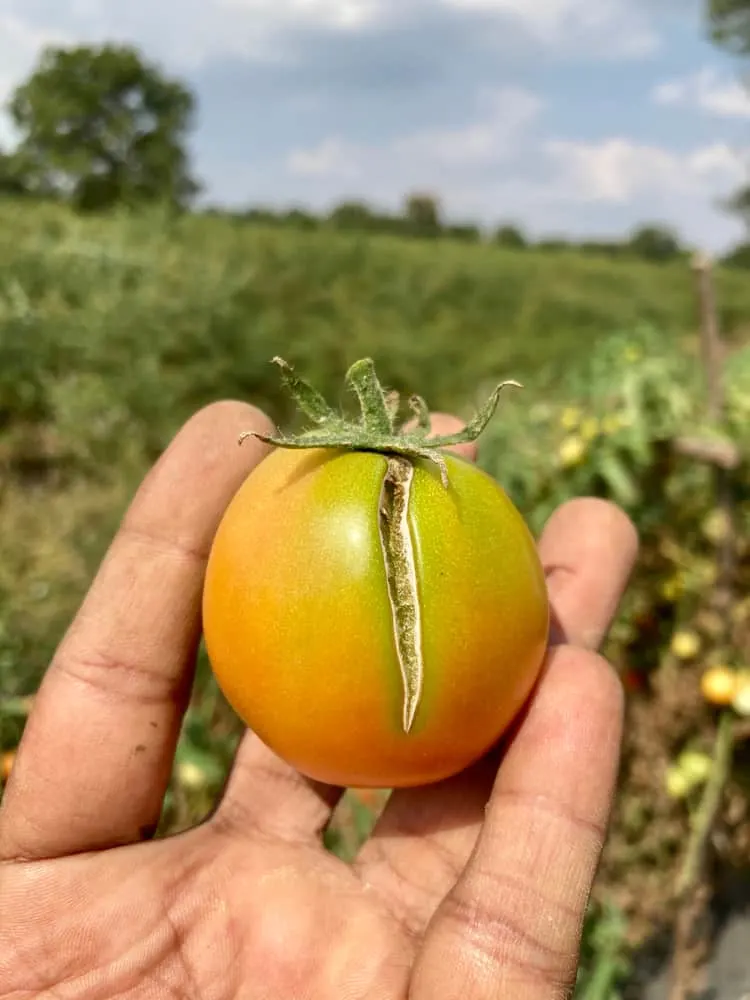
Concentric cracks occur on top of the tomato, around the stem.
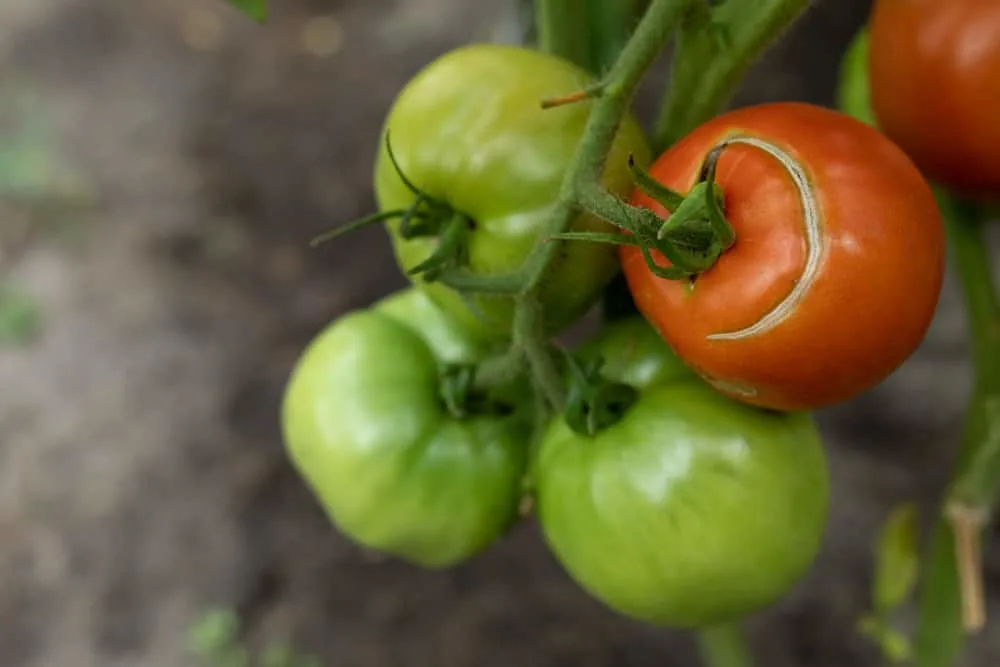
Both types of splitting can occur at any point in your tomato’s growing stage, whether they’re still green or a mouth-watering red.
Whilst it’s not the end of the world that your tomatoes are splitting, it’s frustrating and can lead to other issues. Deep splits leave the inside of your tomato vulnerable to pests, bacteria, and fungi, which encourages disease and rot.
Luckily, there are five easy steps to take to prevent splits from ever happening.
5 Ways To Prevent Tomatoes From Splitting
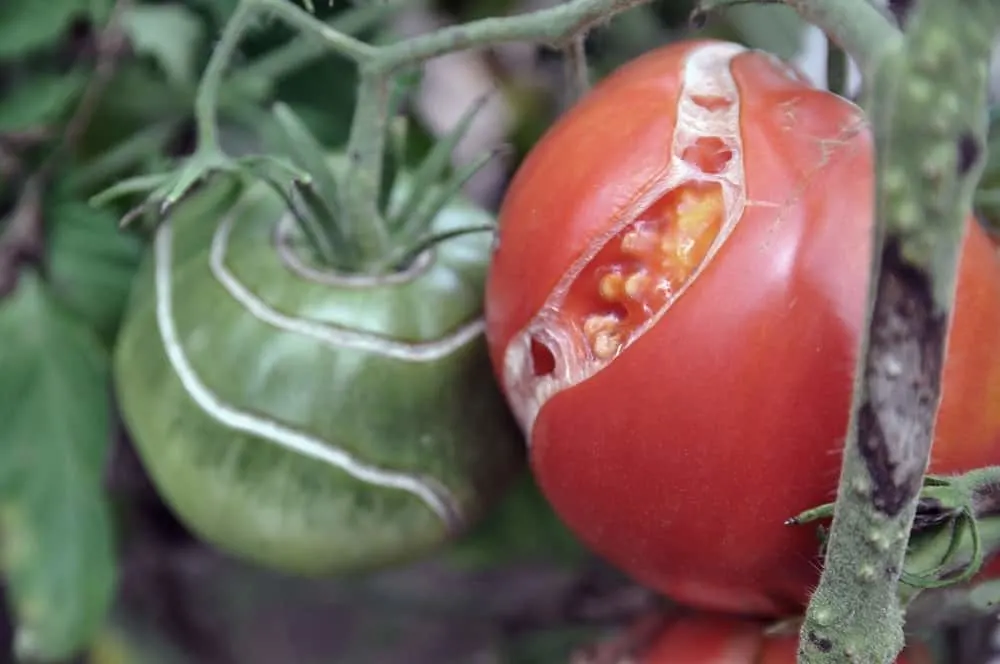
1. Water Correctly
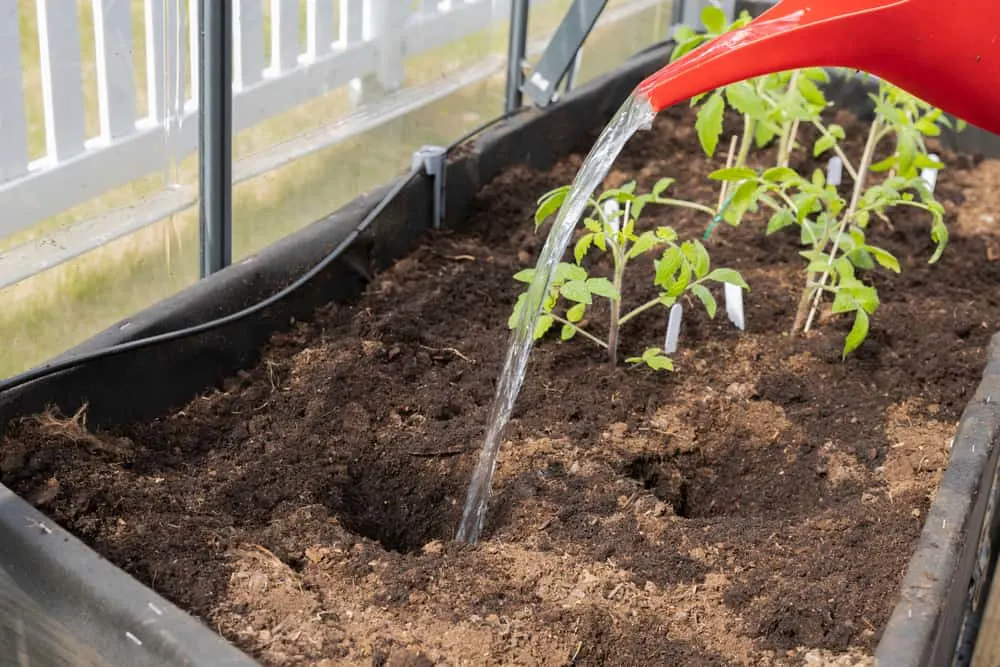
Watering tomato plants correctly is one of the most important things to consider when growing tomatoes. Unfortunately, many people continue to get it wrong. Whether you overwater or underwater your tomatoes, there can be dire consequences.
Not only will your tomatoes be more susceptible to splitting, but they’ll encounter several other issues too – root rot, low yields, poor quality fruit, yellowing, and even stunted growth. Pests and diseases also thrive on badly watered tomatoes.
How often you water depends on the age and size of your tomato plants, the stage of fruit growth, and how you’ve planted them. You also need to consider several environmental factors like rainfall and temperature.
During the early stages of life tomato plants need plenty of water to establish strong root systems. As the roots stretch deeper into the soil, the plant can manage fewer waterings, so long as the soil is watered deeply. Bigger plants tend to have larger root systems which take up and deplete water a lot faster. They’ll need more water than smaller tomato plants.
Hotter temperatures call for more water too. But, if you’re bound to have heavy rain during the week, hold off on your weekend watering.
The best way to water your tomato plants is to water deeply, but slowly. This allows the water to penetrate the soil properly.
You should also water the soil directly at the base of your tomato plant, preventing water from touching the leaves. When you water the entire plant, much of the water doesn’t reach the soil and can sit on the leaves, inviting pests and diseases.
Maintaining consistent and correct water levels will keep your tomatoes juicy and prevent them from splitting. Keep a close eye on changes in temperature and respond accordingly to ensure your fruits are not under stress.
2. Monitor The Soil
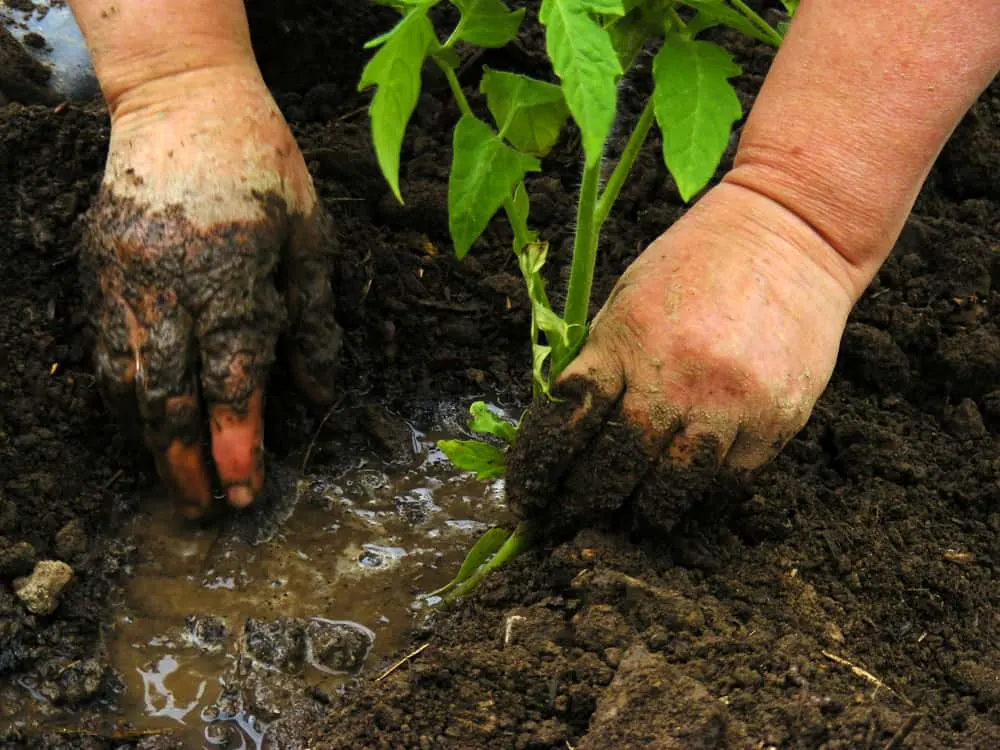
To prevent splitting tomatoes, you also need to make sure your soil is correct. Tomatoes thrive in well-draining soil. If you notice that water pools around your tomatoes after watering, you have a soil problem that needs solving.
Planting tomatoes in raised beds or containers with holes in them can help with drainage issues. Adding good compost or coco peat to low-quality soils improves drainage without removing moisture, especially for clay-heavy soils.
Well-draining soil means that heavy rains aren’t concerning, as water is less likely to pool around your tomatoes. Soil that drains well will not hold more water than the tomatoes can handle, preventing them from splitting.
3. Mulch
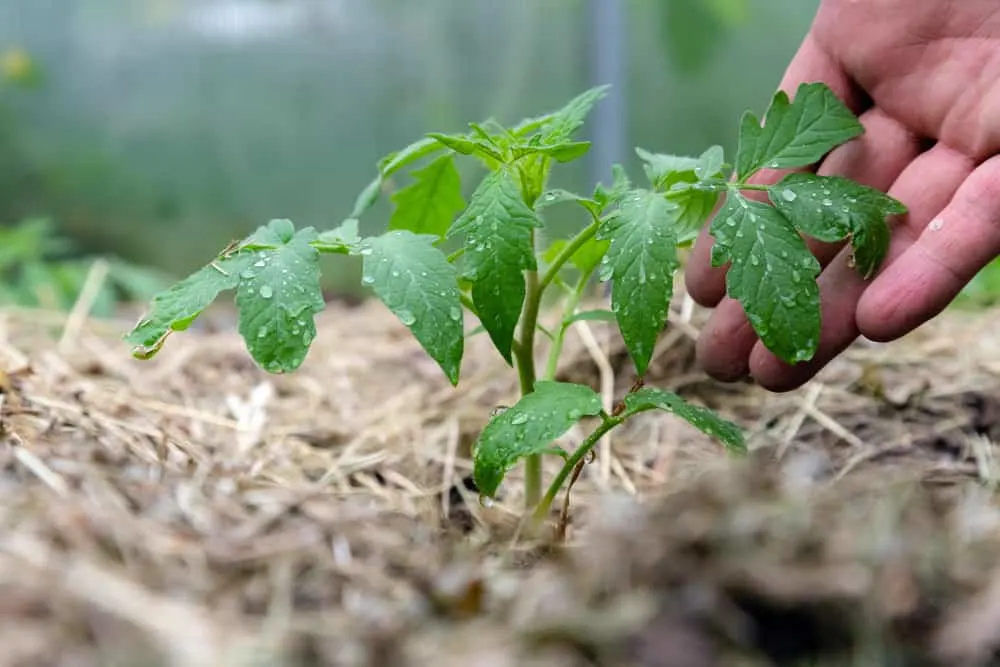
Mulching around the base of your tomatoes is key for water management, mainly because it helps retain water.
A 2-inch layer of mulch keeps the soil around your tomatoes cool and stops water from evaporating. This safeguards your tomatoes from those hot and dry spells which cause nasty splits.
Because mulch helps retain water, you won’t need to water as often, which is always a win. But that’s not the only benefit of mulch. Mulch also stops weeds from growing. If they do manage to peek through, the layer of mulch makes pulling them a lot easier. Organic mulching prevents soil erosion and breaks down over time, keeping the soil structure strong.
One of the greatest things about mulch is that it’s super easy to do, and inexpensive if you choose the right materials. You can use old leaves, straw, compost, and even bark chips.
4. Pick Early
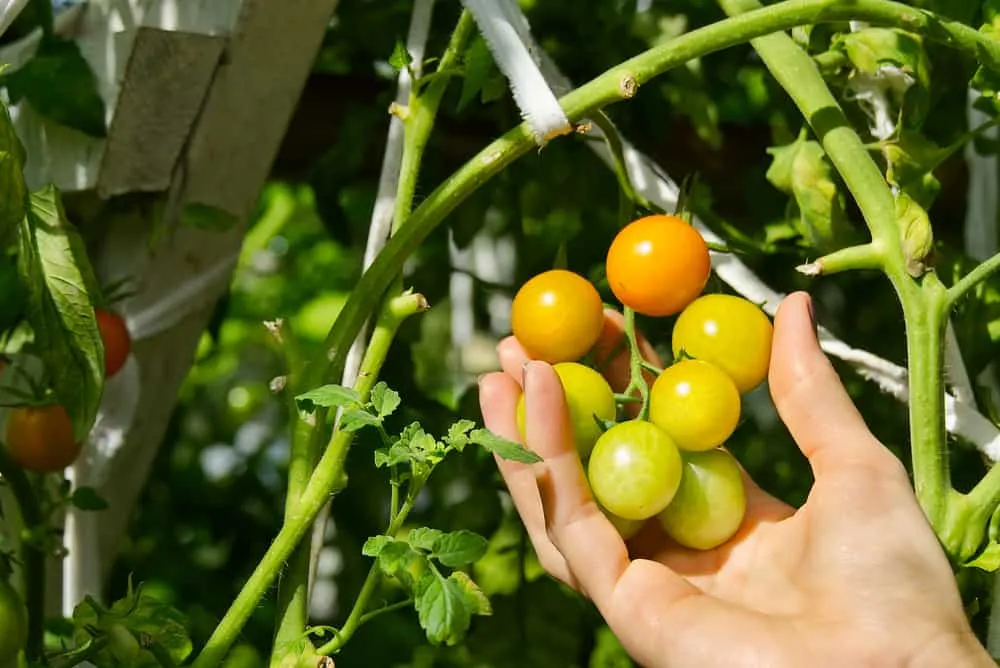
One of the best ways to prevent your tomatoes from splitting is to ripen them off the vine. Even if you’ve done everything else, this is a sure-fire way to prevent those ugly cracks from emerging right as your tomatoes are ready to pick.
Some argue that ripening your tomatoes on the vine improves their flavor. But that’s not always the case. Once they’re past the green stage, their flavor is no longer affected by staying on the plant, meaning you can ripen indoors or outdoors and enjoy the same great taste.
Picking your tomatoes early – just before a heatwave or weeks of predicted rain – has its many benefits.
You not only stop cracks from occurring but you can also control the ripening process. You can let them ripen on their own on your kitchen counter. Or, you can speed up the process by placing them in a container or paper bag.
5. Plant Resistant Varieties
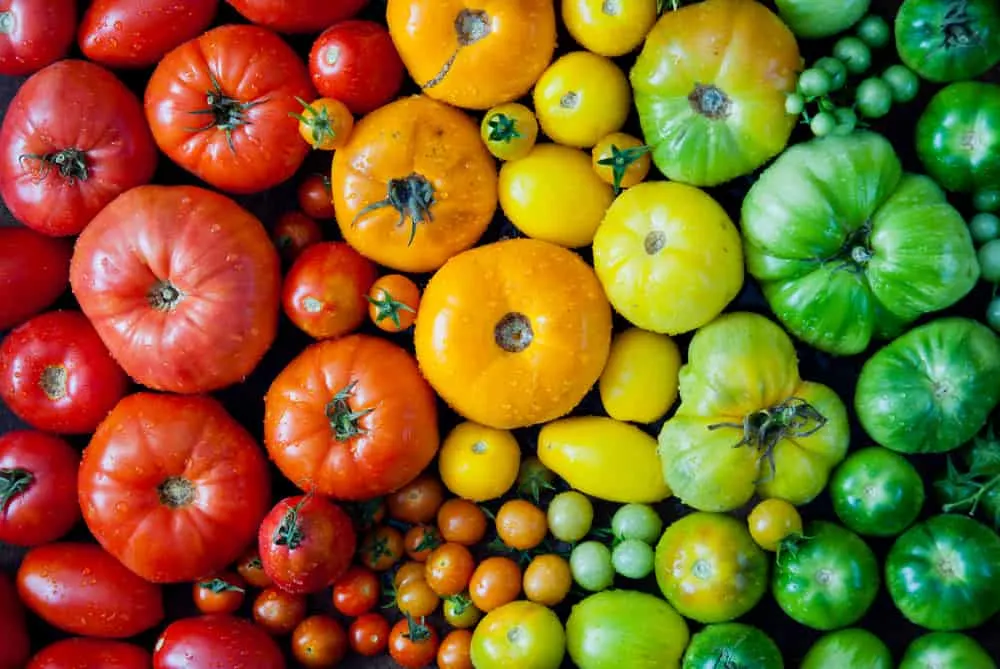
Some tomato varieties are more prone to splitting than others. Smaller varieties with thick, elastic skin are less likely to split. Many hybrid types are not only split resistant but also disease resistant. Some can even offer higher fruit yields.
Always check your plant’s label or seed catalog to make sure it’s a problem-free variety. Pair split-resistant varieties with the other prevention methods. This way you’re almost guaranteed split-free tomatoes.
What To Do With Split Tomatoes
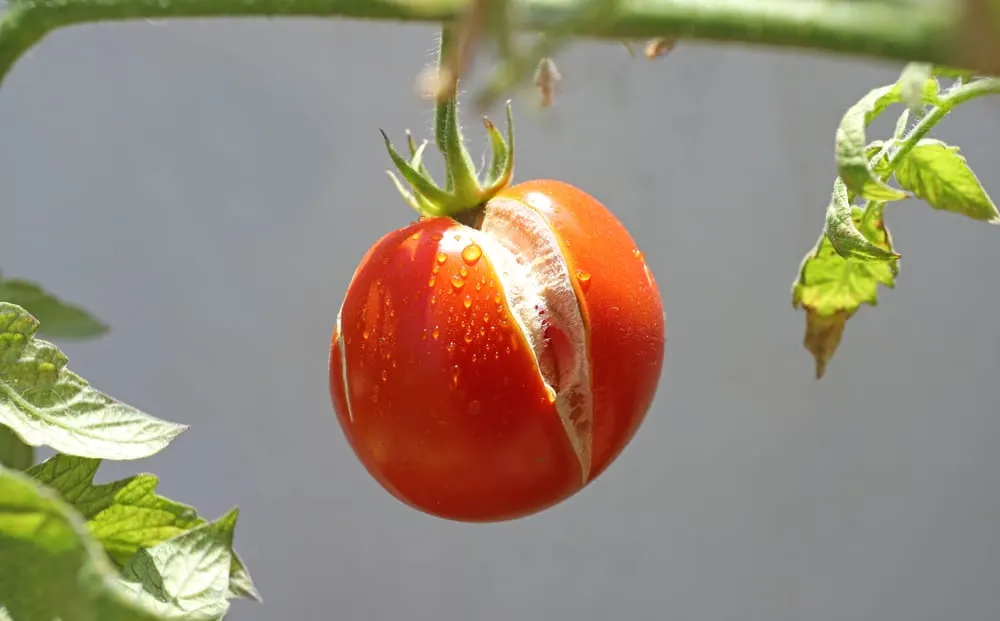
If your tomatoes do split, don’t stress. It may be frustrating, but they’re still edible.
Harvest split tomatoes immediately to prevent pests and bacteria from taking root in the cracks. Inspect your split tomatoes carefully once harvested. If there are no signs of rot or pests, you can add them to any meal you wish.
Unfortunately, they can’t be stored for long and should be eaten immediately. If you have many split tomatoes and not enough time to eat them, try one of the many preservation methods.
Split tomatoes that have gone bad are easy to spot. They tend to smell sour and their splits ooze. These fruits need to be discarded properly to prevent the spread of disease and pests. Don’t throw them on your compost pile or out in the garden – discard them with your regular household waste.
